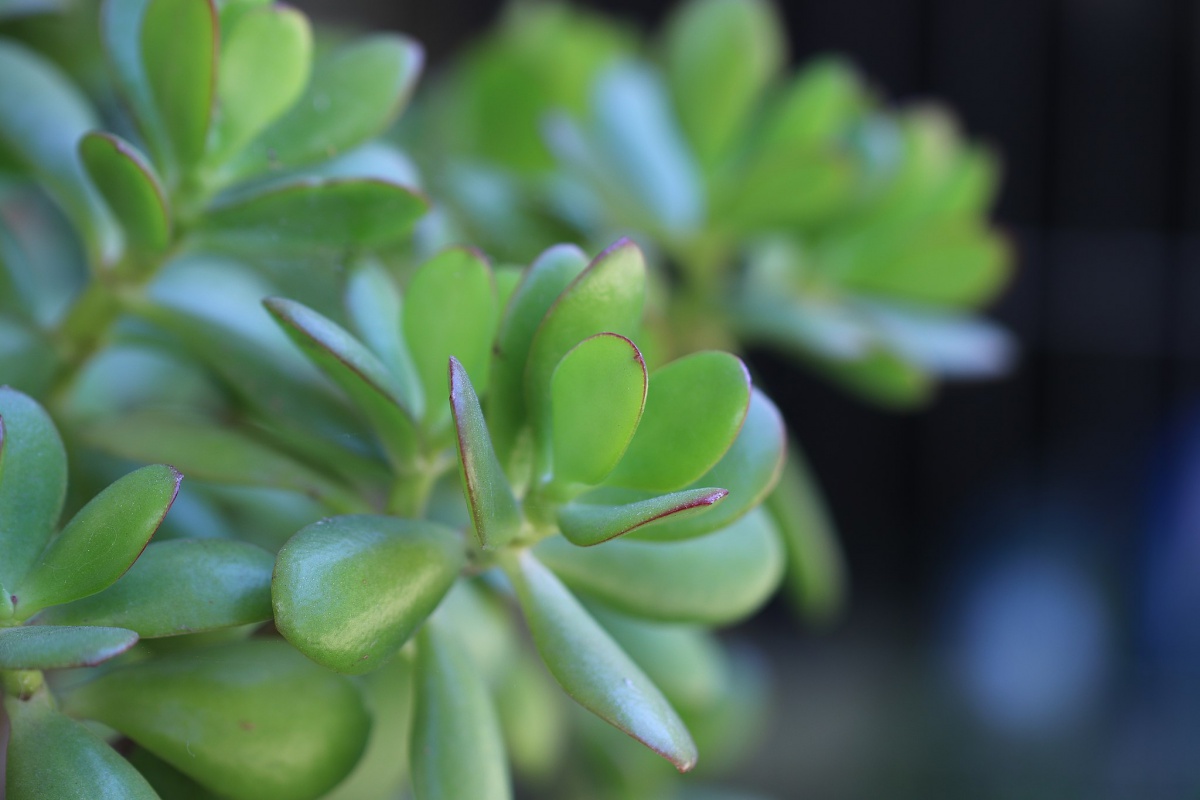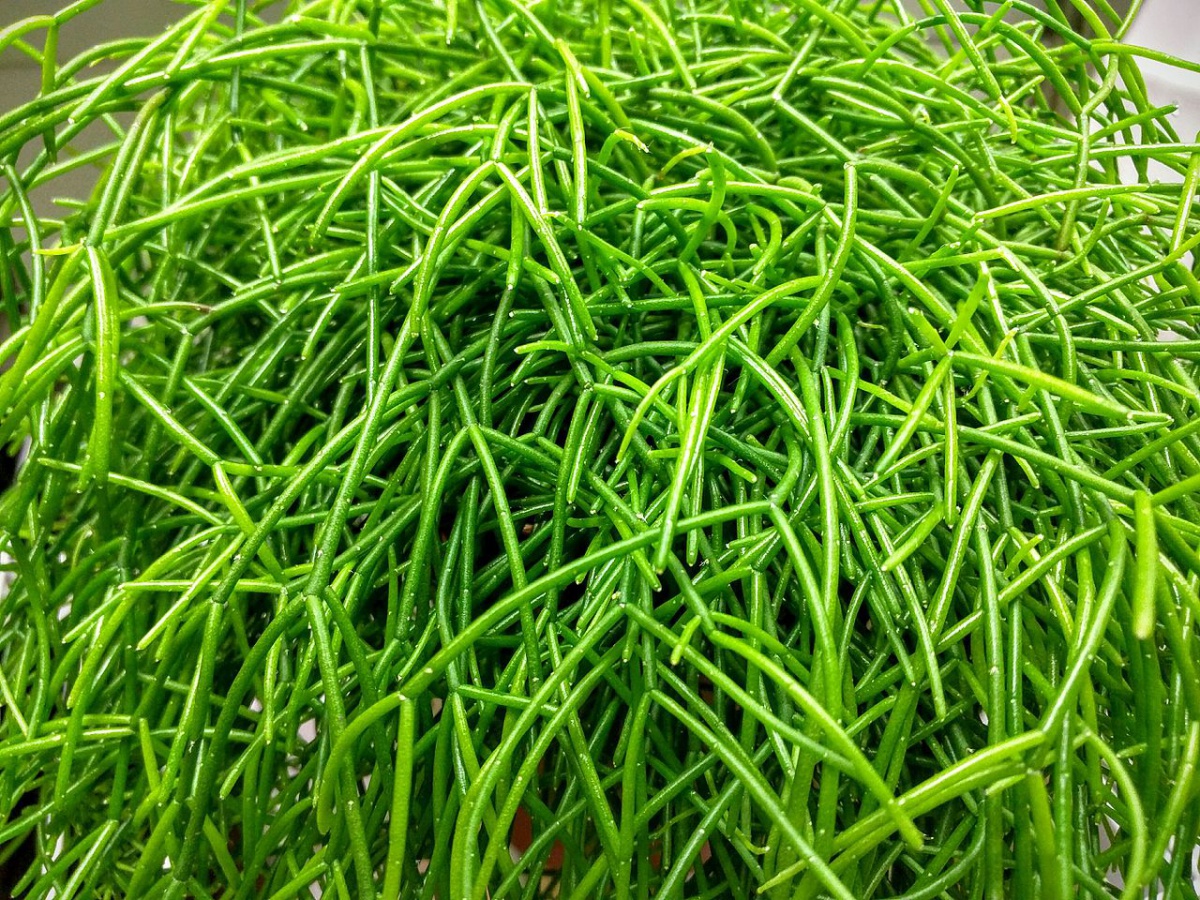Succulents Shine in Winter

In the world of houseplants, an especially show-stopping group are the succulents. If you feel as though you’re seeing succulents everywhere these days, you are not alone. Of course, their pots crowd the benches and tables at florist shops and in greenhouses as much as ever. These days, though, it seems they are for sale just about everywhere: in “big box” and wholesale club stores, gift shops, groceries and hardware stores, to name just a few, and through scores of vendors and services on line. The tremendous variety in the unusual shape and configuration of their fleshy leaves makes them fascinating houseplants, demanding close admiration of their whorls, spikes, bulbous shapes, or whatever their particular characteristics might be.
Decorators love their dramatic appearance and ease of care, so they are featured often in magazines. As houseplants go, their appearance for the most part doesn’t change radically from one season to the next, and most do not rapidly outgrow their pots. They are very popular as gifts (it’s always nice to give something that doesn’t demand a lot of upkeep from the recipient), and in appearance they run the gamut from adorable and charming to dramatic and even jaw-dropping.
A Feat of Evolution
The name “succulent” comes from Latin “sucus,” meaning sap or juice. Succulents are so called because their leaves and/or stems have evolved into structures with an enhanced ability to store water, hence they seem “juicy.” (Some succulents, in fact, are able to store water in their roots; this means that although the plant may die back to the ground, portions of it survive under the soil.) The water-holding structures of succulents are noticeably thickened or fleshy; succulents have adapted to survive periodic drought, and in the case of some, even desert conditions where soil moisture is perpetually at a deficit. In some arid habitats, the soil may be unable to retain rainwater, due to the composition of the soil itself, or because the rain cannot penetrate the soil before it runs off.
Adaptations to arid growing conditions may include a compact or squat growth habit, narrow or rounded foliage, a coating on the foliage and/or stems, and even tweaks to a species’ metabolism. Many of their survival strategies reduce moisture loss due to respiration and evaporation in numerous, ingenious ways: by alterations in photosynthesis; with protective exterior surfaces that may be waxy or hairy; or with roots so shallow they are able to reach even mere traces of surface moisture. With all these adaptive tricks, the appearance of succulent plants is fantastically varied.
Growing Succulents Indoors
Perhaps a succulent has caught your eye, and you’re wondering whether it will thrive in your home. Succulents are not demanding if you can provide a moderate amount of light (preferably 6 hours from south-facing window, but usually east or west will do, too) and a draft-free location that doesn’t dip below about 50 degrees. What can go wrong? In a nutshell, too much water or too little light. As Emma Erler, UNH Extension Education Center Program Coordinator says, “It makes a lot of sense that succulents require sun, warmth, and well-drained soils, once you know that most of them come from arid environments. The coffee table in a dim living room hardly resembles dry South Africa, where many of the most common succulents are found in the wild!”
Before purchasing your succulent
Check the plant and the soil for signs of disease or insects, so as to avoid introducing a new problem to your plants at home. If you are selecting a plant for its flowers, choose one that has numerous flower buds.
When bringing home your new succulent houseplant
Take care to protect it from cold on the way; even a brief exposure to very cold temperatures can damage the plant’s tissue.
Choose a location where your new plant can thrive
Some succulents have a more specific preference for temperature or light so it is a good idea to know what it is you are adopting so you can look up how best to accommodate it. If you have children or pets, verify whether your new plant is toxic and should be placed in a secure location.
Provide excellent drainage
Make sure your pot has drainage holes! (Sometimes plants are sold in decorative containers that do not have holes.) The planting medium should be free draining.
Ongoing care
Many succulents can be left to continue growing in the pot in which they were purchased for years. If you do need to repot, choose a sterile, free-draining potting soil mixture that includes perlite. If repotting, select a size that holds your plant snugly; it will not thrive in a pot that is too large. Most succulents dislike wet or damp soil, and should be given water when the soil is rather dry to the touch; after watering, check that there is no water standing in the pot saucer. They prefer a dry atmosphere to a humid one. If you begin to see brown areas on the foliage, check that the plant is not overwatered, nor the location too cold. Be sure that plants are not chilled by being placed too close to a cold window.
Checklist for evaluating ailing succulents
- Is it receiving adequate sun? Aim for 6 hours of direct sun.
- Is the soil too wet? Does the pot have drainage holes, and do they allow good drainage? Try watering your plant over the sink, and see whether the excess water runs through easily.
- Is the temperature too cold?
- Is the pot too big for your plant? A pot diameter as little as an inch greater than the plant should be adequate.
Succulent Favorites
Houseplants go in and out of fashion. Some of the current succulent celebrities in the spotlight include plants from the following genera, with enormous variation in size, and in habit from lush to spikey:
Aloe: Members of the lily family, these are slow growers. Still, some develop a stem so heavy that the plant begins to sprawl, normal for some species. Other species boast the thick, juicy leaves celebrated for the gel used to treat sunburn. Will grow in south, eastern or western exposure.

Crassula: Most Crassula species, such as the iconic jade plant, are enjoyed for their foliage, though a few produce splashy blooms. Because these plants can become quite top-heavy, a substantial clay pot rather than a plastic one, may be necessary as your plant grows. Crassula prefer at least 4 hours of direct sunlight. Allow the soil to become fairly dry between waterings. Easy to propagate.

Echeveria: Most Echeverias grow as a low rosette. They appreciate bright light. Water sparingly until the soil is barely moist, and let nearly dry out between waterings. When happy, they may send up flowers on spikes.

Epiphyllum: Sometimes known as the climbing or orchid cactus, and generally flowering in spring. The foliage is quite flat. These plants prefer regular watering in spring and summer (do not let the soil dry out when the plant is flowering), and appreciate the occasional misting. Some relief from intense southern exposure in summer may be beneficial.

Haworthia: This genus boasts beautiful foliage in a rosette form and with eye-catching tiny, white “encrustations.” The plants may produce off-white flowers. A very slow grower. Prefers southern exposure, will manage with western. Let soil dry between waterings. Easy to propagate.
Kalanchoe: Some species are grown for their striking foliage, and others their showy, bright flowers. All have fleshy leaves. Provide adequate water when blooming; otherwise, let soil become nearly dry between waterings. Spare watering will control the rate of growth. Southern exposure preferred, but will manage with east or west. Easy to propagate.
.jpg)
Rhipsalis: Many of these plants look like stick-figure illustrations, a bit cartoonish. They are sprawlers, but slow-growers. In bright light they may produce flowers and berries, but the foliage in low light is charming. Let the soil dry out between waterings.

Sedum: Sedums by and large will take all the light they can. Allow the top half of the soil to dry between waterings. Take care not to inadvertently knock off the plump foliage.
Senecio: Tremendous range of habit, from vertical to trailing, and of foliage, from the broad, thick leaves of dusty miller to the fairy-tale beads of “string of pearls.” Some Senecio are grown for their showy flowers, and others for their startling foliage. Southern exposure is preferred, but will manage with east or west. Let soil dry out between waterings. Some species are easy to propagate.
UNH Cooperative Extension Master Gardener volunteers share information about home, yard, and garden topics with the people of New Hampshire. Got questions? Master Gardeners provide practical help finding answers to your questions through the Ask UNH Extension Infoline. Call toll free at 1-877-398-4769, Monday to Friday, 9 a.m. to 2 p.m., or e-mail us at answers@unh.edu.
Do you love learning about stuff like this?
SUBSCRIBE TO Granite State Gardening newsletter
Got questions? The UNH Extension Yard and Garden Infoline offers practical help finding answers for your yard and garden questions.
Call toll free at 1-877-398-4769, Monday to Friday, 9 a.m. to 2 p.m., or fill out webform.

